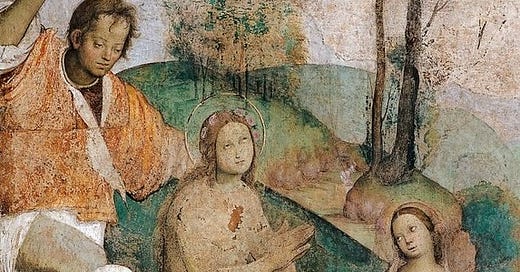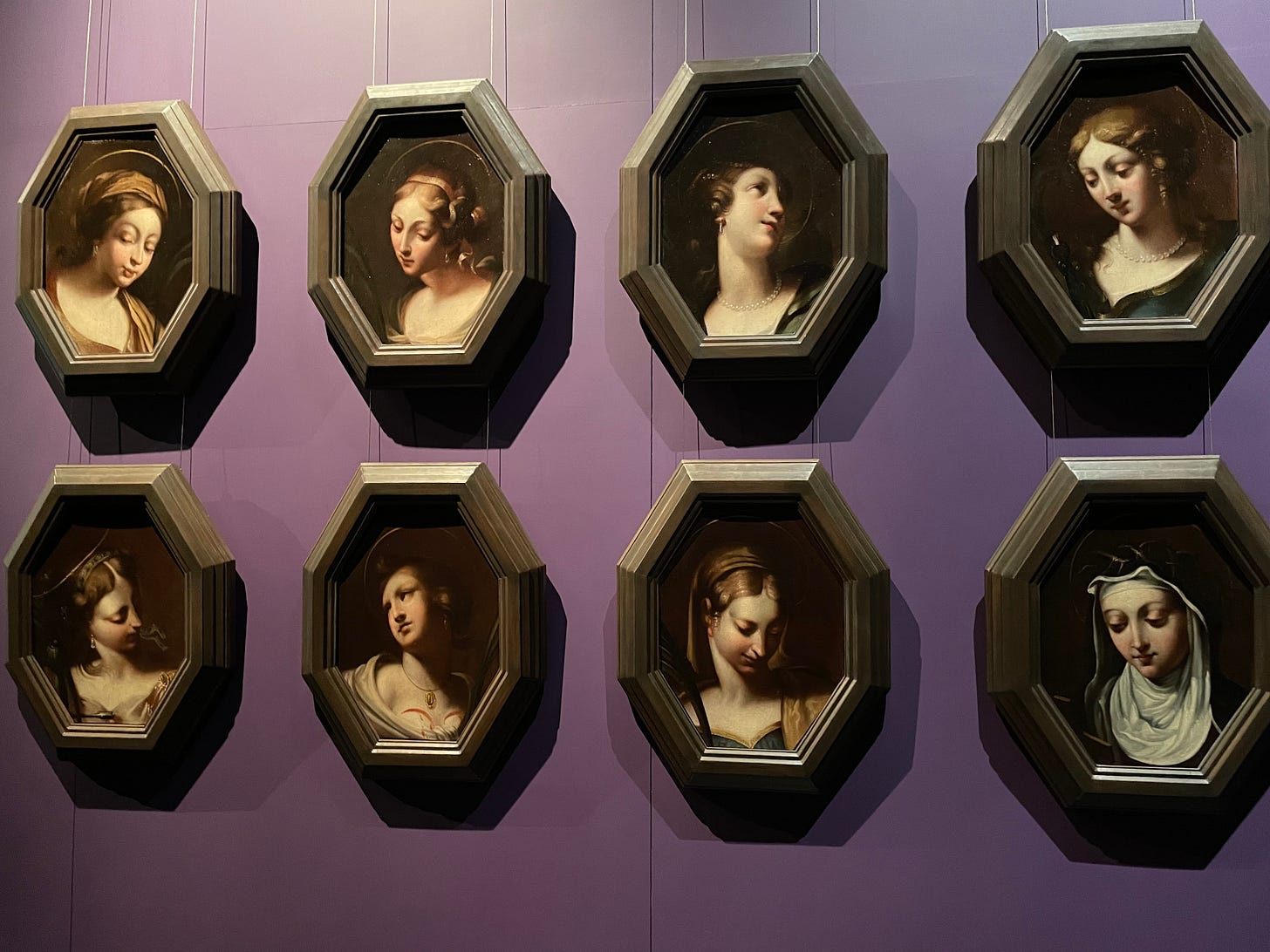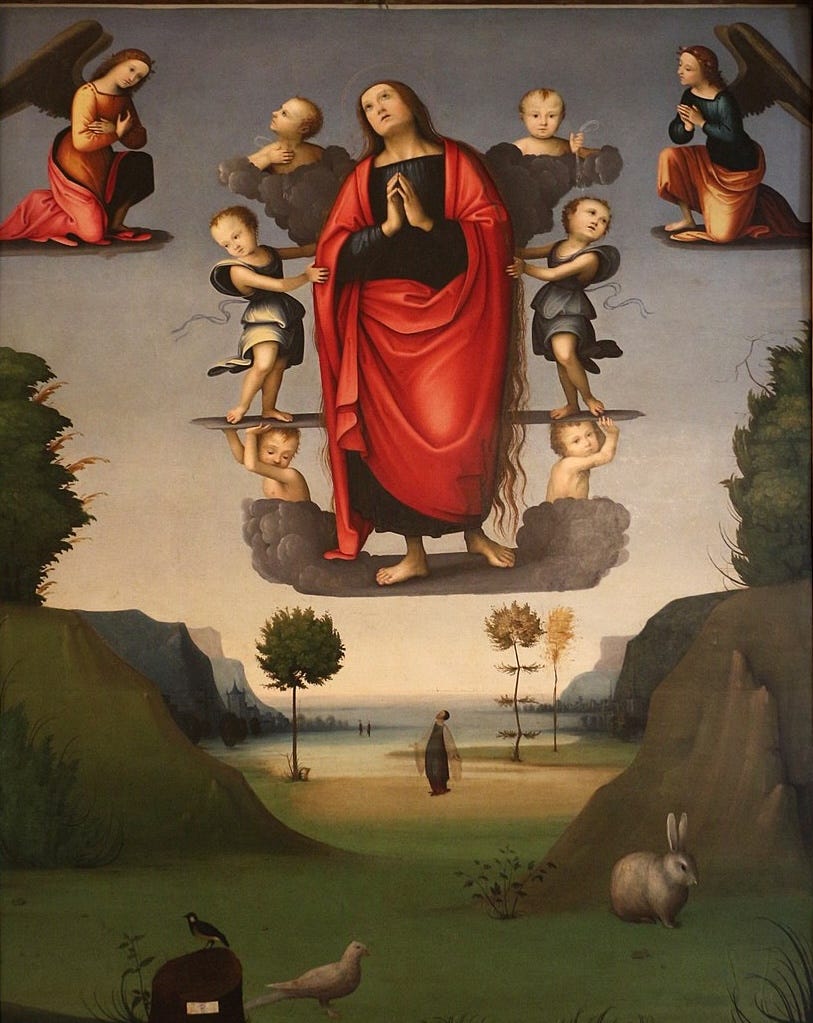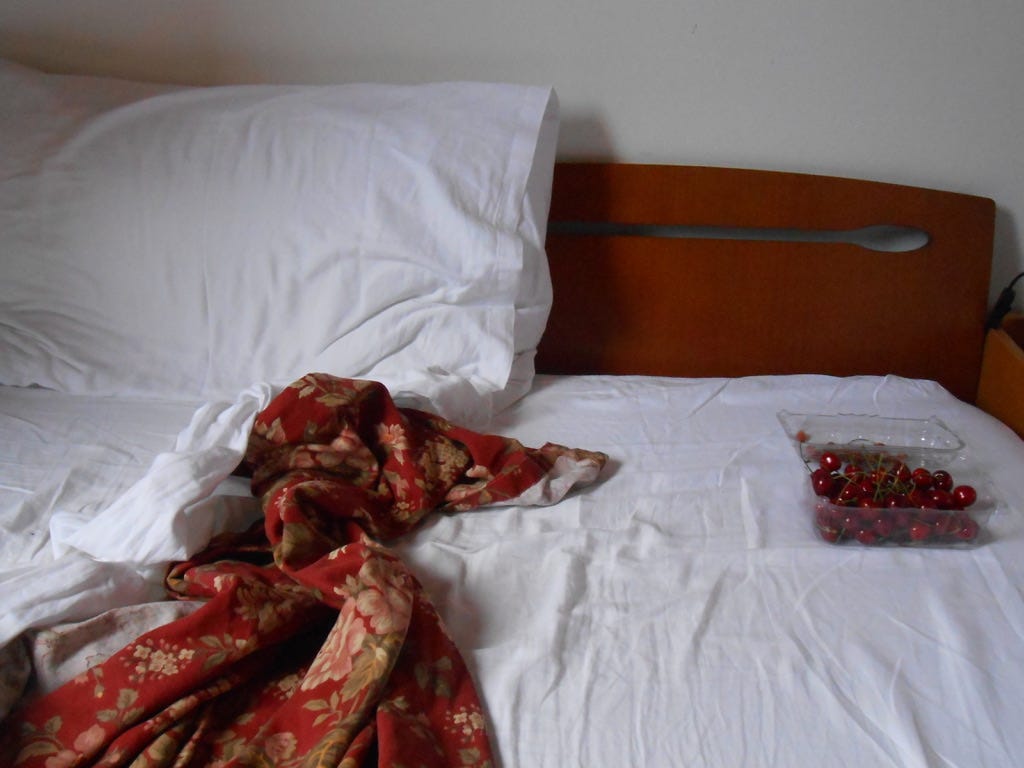My time in Parma was two nights long and was shared between three ladies: myself, my mother, and her friend. In Parma, we saw lots of chic ladies wearing loose-fitting linen blouses and high heels. We also saw lots of female saints, which I am especially on the look out for because of my ongoing, undefined research project. In the churches and galleries, over two days, we saw Sant’Agata, Santa Lucia, Sant’Apollinare, Santa Caterina (translated by one label as “Saint Chatherine”) d’Alessandria, Santa Teresa d’Avila, Santa Maria Maddalena, Santa Teopista, Santa Cecilia, Santa Chiara, Santa Gertrude, Santa Scholastica, Santa Flavia Domitilla, Sant'Agnese, Santa Felicita e suo figlio Vitale, Santa Francesca, Santa Daria, Sant’Anna, Sant’Orsola, Santa Giustina, Santa Margherita di Antiochia, Sant’Elisabetta, Santa Barbara, Sant’Elisabetta d'Ungheria, Sant’Euphemia, Santa Bibiana, Santa Caterina di Siena, Sant’Anastasia seniore, Santa Martina, and Santa Teela. Naturally, we saw Eve and the Virgin Mary. And a few allegorised women: Giustizia, Fede, etc. And I may well have missed someone.
A lot of these women tend to look up. A key Bologna example is the Raphael Santa Cecilia, who turns her gaze to a choir of angels above her. Many other Santa Cecilias also look up, such as the very similar Bastianino work at the Pinacoteca in Ferrara (made for Santa Maria in Vado) or Denys Calvaert’s or Scarsellino’s or Laureti’s. In the Oratorio di Santa Cecilia, Amico Aspertini depicts the attempted killing of Cecilia by putting her in a boiling bath. She looks upwards and she is not burned.

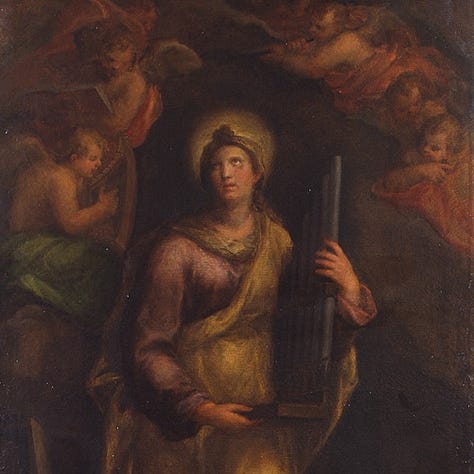
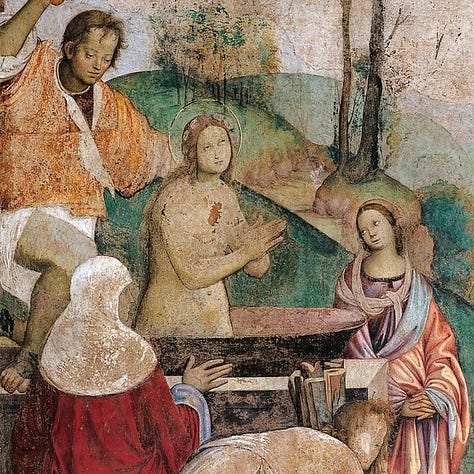
In Antonio Boldrini’s depiction of Santa Filomena in the Chiesa di San Francesco, Ferrara, she looks up at the hand of the man who is about to decapitate her. In Tiburzio Passarotti’s Santa Caterina in Bologna, she is surrounded by the chaos of her own martyrdom but she steadfastly fixes her eyes above her into a shower of glitter and light. In Parma, Bernardino Gatti’s Santa Agnese looks up, away from her exposed breasts which show the scars of being excised in her own martyrdom.
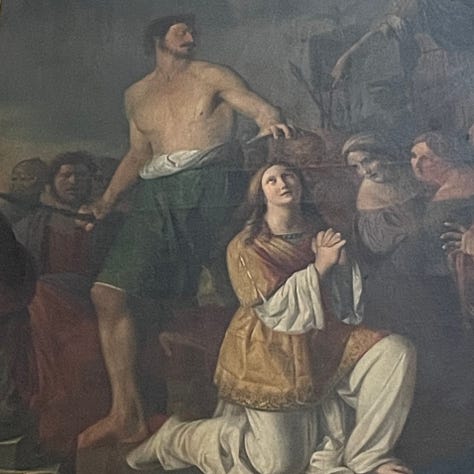

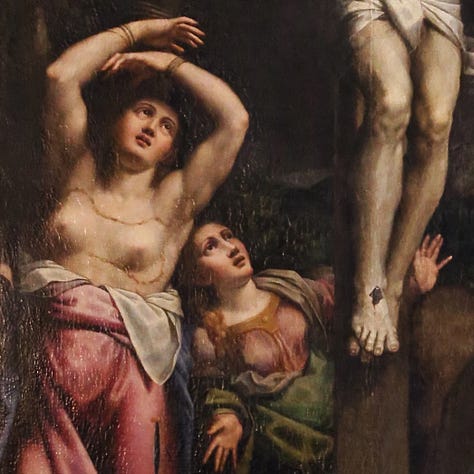
We often see Mary Magdalene looking up at Christ as she grieves for him below the cross. She looks and goes up in the curious Elevation of Mary Magdalene in Ferrara.
In the Basilica of San Giacomo Maggiore in Bologna, Santa Monica, Santa Rita da Cascia, Santa Chiara, Santa Lucia, Santa Caterina, Santa Cecilia, and Saint Agatha are all looking upwards.
It is true that male saints look up too, and so do men in general. But there are specific reasons why women look up. One is religious ecstasy (which contains in it eroticism), see: Bernini’s Santa Teresa. A woman looks up because her experience of the divine is so encompassing, physically and spiritually, and her female body and soul are so sensitive to that that she has nothing else to do but roll her eyes back. Contrary to that, looking into the heavenly space and leaving behind visual concerns with the world around you can be a refusal of the sexuality inherent in the earthly female body, which contains and causes so much sin.1 Women look up at men both when they are killing them and when they are redeeming them. Women look up because the world above promises infinite acceptance and love and tolerance and the 16th-, 13th-, ??th-century worlds they currently inhabit do not. They look up away from the boiling water that is trying to kill them and their excised breasts because they cannot bear the pain. Women look up at women, often at the Virgin, and they do so in a way that shows their sameness and their reverence. Women look up because they are curious. Women look up because they hear music. Women look up because there’s nothing else to do. Women look up because there’s a painting there and they’re doing some kind of ongoing, undefined research project.
In the last few days, Emilia-Romagna has been covered with a cloud of Saharan dust that has made the sky consistently grey, without any variations in tone, despite the temperatures being devilishly hot. Not even one of those cool Saharan dust clouds that makes the sky yellow or orange or red. For this reason, it isn’t particularly interesting to look up. I also doubt my ability to solve all of my problems by looking to a world that is not my own, partially because I’m not quite ready yet to sacrifice my life for the Catholic faith. Instead, I have proposed to myself, especially as I go slightly crazy after being alone for too long, to look to either side of me and see goodness there. So I wrote a list of creature comforts that make me content and that I am grateful for that are immediately around me and not lofty in the slightest. The list gives the strong impression of being written in a kitchen, but when you’re in a studio apartment everywhere is kind of the kitchen and when you’re coming off of the high of reading Elizabeth David’s Summer Cooking everywhere is kind of the kitchen in a whole different, more amazing way. So this is me looking around my kitchen, mostly.
MY CREATURE COMFORTS (while looking sideways, not upwards):
cherries and the tea you can make from boiling cherry stems, iced
anchovies marinated in parsley and garlic
the honey from the farmers market that Catrin gave me
ripe melon (dripping everywhere)
two cups of hot herbal tea a day, one after lunch and one before bed
ice cold water and the sound of ice clinking in the glass
lao gan ma from the asian market around the corner
leaving my windows open, hearing snippets of conversations, feeling the heat of the sun, feeling the breeze
the bouquet of flowers Ruby got me with MINT in it so it smells so lovely
the smell and taste of basil, including in my new favourite form, the Gin Basil
swallows flying outside my window, chirping, moving in a smooth and erratic way
candlelight
the one wall light in my apartment that is the appropriate level of warm (very)
dark chocolate straight from the fridge
Here is a picture to act as evidence to prove I willfully relish in eating cherries while laying horizontally and not looking or pointing up particularly at all.
See, about bodies, David Foster Wallace’s first footnote from the article Roger Federer as Religious Experience:
“There’s a great deal that’s bad about having a body. If this is not so obviously true that no one needs examples, we can just quickly mention pain, sores, odors, nausea, aging, gravity, sepsis, clumsiness, illness, limits — every last schism between our physical wills and our actual capacities. Can anyone doubt we need help being reconciled? Crave it? It’s your body that dies, after all.
“There are wonderful things about having a body, too, obviously — it’s just that these things are much harder to feel and appreciate in real time. Rather like certain kinds of rare, peak-type sensuous epiphanies (“I’m so glad I have eyes to see this sunrise!” etc.), great athletes seem to catalyze our awareness of how glorious it is to touch and perceive, move through space, interact with matter. Granted, what great athletes can do with their bodies are things that the rest of us can only dream of. But these dreams are important — they make up for a lot.”


